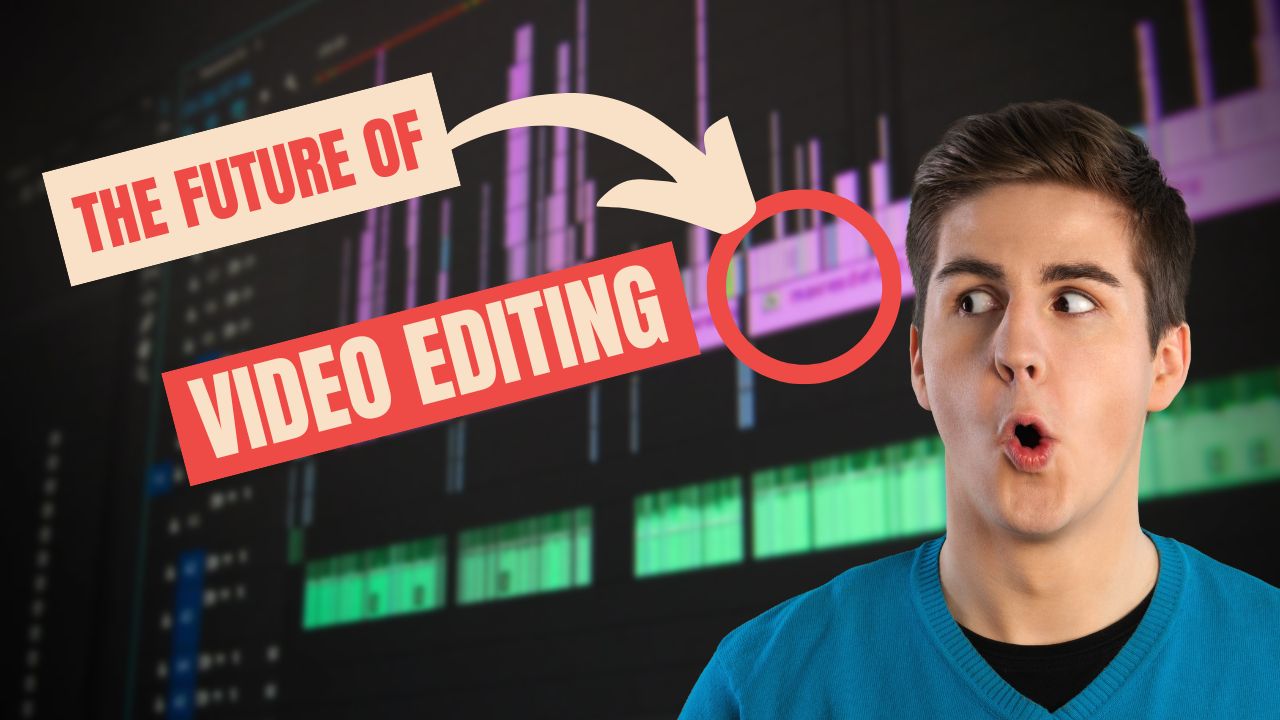The Future of Video Editing: Trends and Predictions for 2024 and Beyond
Namaskar dosto! Swagat hai aap sabhi ka is blog mein. Aaj hum baat karenge video editing ke future ke baare mein, jo aane wale saalon mein video production aur post-production industry ko kaise shape karne wala hai. Video editing technology rapid pace par evolve ho rahi hai aur naye innovations aur trends dekhne ko mil rahe hain. Toh chaliye, dekhte hain kuch trends aur predictions jo video editing ke future ko define karenge.
1. Artificial Intelligence (AI) and Machine Learning
AI-Powered Editing Tools
AI aur machine learning ka use video editing mein increase ho raha hai. AI-powered editing tools se automated editing, scene detection, aur smart cropping jaise features provide kiye ja rahe hain. AI se video editors ka time save hota hai aur efficiency improve hoti hai.
Enhanced Visual Effects
AI visual effects aur CGI (Computer Generated Imagery) ko enhance kar raha hai. Real-time rendering aur realistic effects create karne mein AI kaafi madadgar sabit ho raha hai, jo high-quality content production ko enable karta hai.
2. Cloud-Based Video Editing
Remote Collaboration
Cloud-based video editing platforms se remote collaboration possible ho gaya hai. Editors, producers, aur clients alag-alag locations se real-time mein collaborate kar sakte hain, jo workflow ko streamline karta hai aur productivity increase karta hai.
Scalability and Flexibility
Cloud-based solutions se scalability aur flexibility milti hai. Users easily resources ko scale up ya down kar sakte hain based on their requirements, jo cost-efficiency aur convenience ko improve karta hai.
3. Virtual Reality (VR) and Augmented Reality (AR)
Immersive Editing Experiences
VR aur AR se immersive editing experiences create kiye ja rahe hain. VR headsets aur AR tools ka use karke editors apne projects ko 3D environment mein visualize aur edit kar sakte hain, jo traditional editing se kaafi advanced hai.
Interactive Content
AR aur VR se interactive content create karna easier ho gaya hai. Yeh technologies future mein audience engagement aur entertainment industry ko revolutionize karne wali hain.
4. 4K and 8K Video Editing
High-Resolution Content
4K aur 8K resolution content production aur consumption increase ho raha hai. High-resolution video editing ke liye powerful hardware aur software ki zaroorat hoti hai, jo future mein advanced tools aur technologies ka demand increase karega.
Better Visual Quality
4K aur 8K videos better visual quality aur detail provide karte hain. High-resolution editing se content creators stunning visuals create kar sakte hain, jo viewers ko immersive experience provide karta hai.
5. Real-Time Collaboration Tools
Integrated Collaboration Features
Real-time collaboration tools jaise live editing sessions, instant feedback, aur collaborative timelines se editors aur clients easily interact aur collaborate kar sakte hain. Yeh features workflow ko streamline karte hain aur projects ko faster complete karne mein madad karte hain.
Cross-Platform Compatibility
Future mein cross-platform compatibility ka trend badhega, jahan editors different devices aur platforms se seamlessly collaborate kar sakte hain. Yeh flexibility aur convenience ko increase karega.
6. Motion Graphics and Animation
Advanced Motion Graphics Tools
Motion graphics aur animation ke liye advanced tools aur software ka use badh raha hai. Yeh tools complex animations aur dynamic graphics create karne mein madad karte hain, jo marketing aur advertising industry ke liye beneficial hai.
AI-Driven Animation
AI-driven animation se automatic character animation, lip-syncing, aur realistic movements create karna easier ho gaya hai. Yeh technology future mein animation industry ko drastically change karegi.
Conclusion
Toh dosto, yeh tha ek glimpse into the future of video editing. AI, cloud computing, VR/AR, enhanced mobile editing, aur real-time collaboration jaise advancements video editing industry ko transform kar rahe hain. Yeh trends aur innovations not only video production processes ko streamline karenge, but creative possibilities ko bhi expand karenge.
Agar aapko yeh blog useful laga ho, toh please like karein, share karein aur comments mein apna feedback zaroor dein. Milte hain agle blog mein, tab tak ke liye, happy editing!
The Future of Video Editing: Trends and Predictions
The world of video editing is evolving at a breakneck pace, driven by technological advancements, changing consumer preferences, and the ever-growing demand for high-quality content. As we look to the future, several key trends and predictions emerge that will shape the landscape of video editing in the coming years.
1. Artificial Intelligence and Machine Learning
Artificial intelligence (AI) and machine learning (ML) are set to revolutionize video editing. These technologies are already making inroads by automating repetitive tasks such as sorting footage, color correction, and even initial cuts. In the future, AI could take on more creative roles, such as suggesting edits based on the mood or style of the footage, or even creating rough drafts of entire projects.
2. Cloud-Based Editing
Cloud-based video editing platforms are becoming increasingly popular, offering editors the flexibility to work from anywhere and collaborate in real-time with teams around the world. This trend is likely to continue, with more sophisticated cloud-based tools emerging that provide the power and capabilities of traditional desktop software without the need for expensive hardware.
3. Virtual Reality (VR) and Augmented Reality (AR) Integration
As VR and AR technologies become more mainstream, video editing will need to adapt. Editors will require new tools to create immersive experiences and to edit footage in a 360-degree environment. This will open up new possibilities for storytelling and audience engagement, but it will also require editors to develop new skills and techniques.
4. Increased Automation
Beyond AI, other forms of automation will streamline the editing process. Speech-to-text software, for instance, can automatically generate subtitles, making content more accessible. Automated motion tracking can simplify the process of adding effects or replacing backgrounds. These advancements will allow editors to focus more on the creative aspects of their work.
5. Enhanced Collaboration Tools
As remote work becomes more common, enhanced collaboration tools will be essential. Future video editing software will likely offer more robust features for team communication, version control, and project management. These tools will enable seamless collaboration, ensuring that all team members are on the same page, regardless of their location.
6. Higher Demand for Mobile Editing
With the increasing quality of smartphone cameras, mobile video editing is on the rise. More professionals and enthusiasts are editing videos on their phones and tablets. Future mobile editing apps will become more powerful, offering advanced features that were once reserved for desktop software, making high-quality video production accessible to everyone.
7. Integration with Social Media
Social media platforms are a major driver of video content creation. Video editing tools will continue to integrate with these platforms, offering features tailored to specific social media formats and requirements. This will include optimized aspect ratios, quick export options, and templates designed for platforms like Instagram, TikTok, and YouTube.
8. Personalization and Customization
As content becomes more personalized, so too will video editing tools. Editors will have access to more customizable templates, effects, and workflows that can be tailored to the needs of individual projects. This will allow for a more personalized editing experience and more unique, tailored content.
9. Real-Time Editing
The demand for live content, such as streaming and live broadcasts, will push the boundaries of real-time video editing. Tools that allow for live switching, on-the-fly effects, and instant editing will become more sophisticated, enabling creators to produce high-quality live content with ease.
10. Sustainability and Ethical Considerations
As with all industries, there is a growing awareness of the environmental impact of video production. Future editing tools and practices will need to consider sustainability, from energy-efficient software and hardware to eco-friendly storage solutions. Additionally, ethical considerations, such as the responsible use of AI and deepfake technology, will become increasingly important.
Conclusion
The future of video editing is bright, with numerous exciting trends and advancements on the horizon. From AI and cloud-based editing to VR and real-time collaboration, the tools and techniques of tomorrow will empower creators to produce more innovative and engaging content. As the industry evolves, staying ahead of these trends will be key for video editors looking to thrive in this dynamic field.
